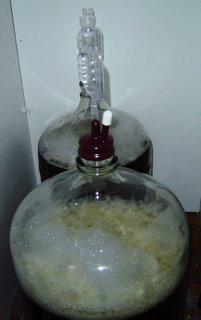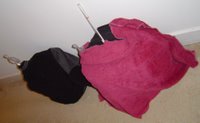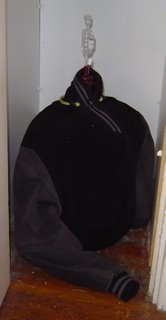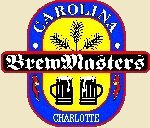Brewed a "Malty" Boston Stock Ale
Compared to HBA, the Alt Bev recipes are packed in a more retail friendly manner but their directions are not so good. I adapted the directions to fit the HBA mold, with which I am more comfortable. Nonetheless, both shops are staffed with great employees.
1. Heated the water to 165 F and added the grainbill for 30 minutes.
2. Pulled out the grainbags and then added the 5 lbs of light DME and brought the mixture to a boil.
 3. Once boil was achieved, I added an ounce of Kent whole flower hops (5.9 alpha) for bittering and set the timer for 35 minutes (pictured upper left). This was the first time I used whole flower hops.
3. Once boil was achieved, I added an ounce of Kent whole flower hops (5.9 alpha) for bittering and set the timer for 35 minutes (pictured upper left). This was the first time I used whole flower hops.N.B. The Alt Bev instructions suggested the Saaz hops for bittering. But at 3.6 alpha, I decided to take Palmer's advice and use higher alpha unit hops for bittering and use the "better" Saaz hops for aroma/dryhopping.
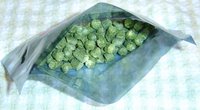
4. Added Irish moss then set the timer for 15 minutes.
5. Add Servomyces and the immersion ciller and set the timer for 10 minutes.
6. Added aroma hops, 1 ounce fof Fuggles (5.6 alpha) and 1.5 ounces of Saaz; set the timer for 2 minutes. The Saaz hops were peletized (upper right).
After I topped off the fermentation bucket I checked the gravity and it read 1.050 (at 70 F). If I do the corrected score (since hydrometers are calibrated at about 60 F), the SG is 10.60. I then added the yeast (Whitelabs WLP008).
Throughout this process I had to reference Palmer's book several times to check which, and how much, hops to use at what point. I also referenced the instructions that came with the HBA kit.
I don't think that dryhopping is consistent with this style but, hey, that is why we brew our own beer. Right?

